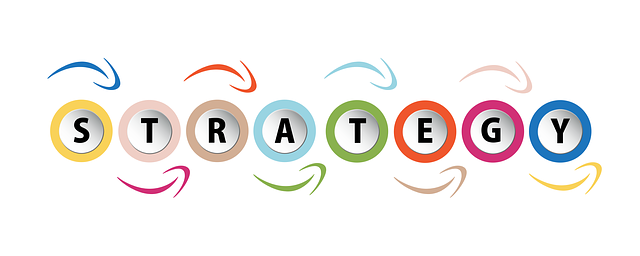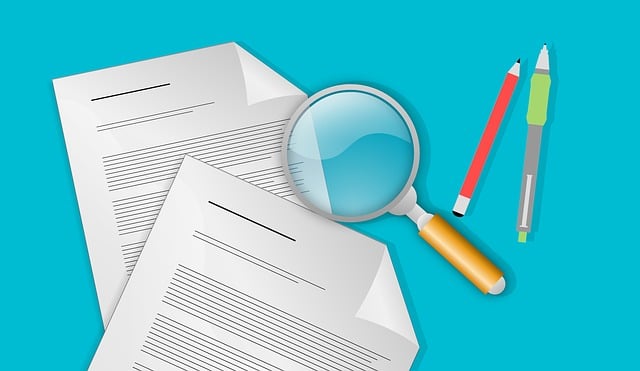Having a year-end checklist for your small business is a practical approach to ensure that all crucial tasks are completed, and you’re not frustrated and stressed come tax time. Here is the summary checklist:
- Financial Review
- Operational Efficiency
- Marketing Strategy Evaluation
- Administration Review
- Planning for the Future
- Emergency Preparedness
- Tax Preparation
1. Financial Review
Reviewing your Profit and Loss (P&L) or Income Statement for the year gives you insight into your financial revenue and expenses. The balance sheet assesses the overall financial health, including assets, liabilities, and equity. These statements are hard to interpret and may not reflect the actual cash flow of the business. I highly recommend using the Profit First cash management system to give you a better understanding of your cash flow. You can download the free Profit First Starting Guide at www.CurtisAccountingSolutions.com/free-tools. By identifying trends and irregularities in these statements, you better understand your financial standing, enabling informed decision-making for the upcoming year.
Here are some additional tips to make this step more manageable and give you more insight.
Separate Personal and Business Finances
Keep personal and business finances separate. Use dedicated business bank accounts to simplify record-keeping and ensure accurate reporting of business transactions.
Inventory Assessment
Conducting a physical inventory count is crucial in ensuring accurate records and efficient stock management. This process not only helps identify slow-moving or obsolete items but also provides an opportunity to optimize stocking levels based on the inventory turnover ratio.
Accounts Receivable
Reviewing outstanding invoices and proactive follow-ups with customers contribute to healthy cash flow management. Implementing early payment incentives or late payment fees can expedite the collections process. Evaluating customer credit terms and ensuring they align with your business’s financial goals brings stability.
Budget Review
I’m not big on budgets because I use the Profit First system. But if you have created a budget, then an in-depth analysis of the budget is crucial for understanding your financial performance and setting new goals for the coming year.

2. Operational Efficiency
By systematically reviewing operational aspects, such as inventory, supplier relationships, and employee performance, you can identify areas for improvement. This leads to enhanced operational efficiency, better resource utilization, and improved overall business performance.
Supplier Review
Assessing the performance of suppliers involves more than just cost considerations. It is crucial to evaluate reliability, quality, and the overall value they bring to your business. Negotiating for better terms and diversifying your supplier base minimizes risks and ensures a more stable and cost-effective supply chain.
Employee Evaluation
Conducting thorough performance reviews with employees goes beyond discussing strengths and weaknesses. It’s an opportunity to align individual career goals with organizational objectives, fostering a sense of purpose and motivation. Adjusting wages, bonuses, or promotions based on merit ensures your team feels valued and motivated for the challenges and opportunities ahead.
Training and Development
Identifying skill gaps within your team is the first step toward comprehensive training and development programs. Investing in your employees’ growth enhances their capabilities and contributes to overall business efficiency. Cross-training ensures flexibility in staffing and minimizes disruptions during peak times or unexpected events.
Technology Assessment
The technology backbone of any business requires periodic evaluation to ensure it remains efficient and aligned with industry standards. Updating point-of-sale systems and inventory management software and embracing emerging technologies enhance operational efficiency. Planning for employee training (if you have employees) provides a smooth transition and adoption of new technological tools, positioning your business for continued success in a tech-driven marketplace.

3. Marketing Strategy Review
An in-depth assessment of your marketing strategy involves analyzing the effectiveness of each channel employed. Understanding the return on investment for various campaigns guides future marketing decisions. This process allows for a calculated shift, reallocating resources to the upcoming year’s most successful channels and campaigns.
Social Media Audit
Social media is a dynamic landscape, and conducting a thorough audit ensures consistency in branding and messaging across platforms. Examining follower growth, engagement metrics, and conversion rates provides valuable insights. Developing a content calendar aligned with promotional events and product launches sets the stage for a cohesive and impactful social media presence in the coming year.
Customer Analysis
Beyond gathering customer feedback, a thorough analysis helps identify patterns, preferences, and pain points. Positive feedback reinforces successful practices, while addressing negative feedback demonstrates a commitment to continuous improvement. Implementing changes based on customer insights fosters a stronger customer-centric approach, enhancing loyalty and satisfaction.
Promotions and Discounts
Evaluating the impact of promotions and discounts on sales and customer loyalty involves more than just assessing immediate results. Identifying the most effective promotions and incorporating them strategically into regular marketing plans ensures sustained customer interest and increased sales. Planning promotions for the upcoming year based on seasonal trends and customer preferences enhances the overall marketing strategy.
Market Trends Analysis
Staying abreast of industry trends requires continuous market research and analysis. Identifying emerging trends positions your business to capitalize on new opportunities and navigate potential challenges. Adjusting product offerings or marketing strategies in response to evolving consumer preferences ensures continued relevance in a dynamic marketplace.
Expansion Opportunities
Evaluating the potential for business expansion involves a strategic approach. This includes assessing new products, services, or additional locations based on market demand and competition. Conducting thorough market research allows for informed decision-making and mitigates risks associated with expansion.

4. Administration Review
Business Permits and Licenses
Ensuring that all required permits and licenses are up to date is not only a legal obligation but also vital for business continuity. Conducting a thorough review and renewing or applying for permits guarantees that your business operates within the bounds of local regulations, minimizing the risk of legal complications.
Employee Compliance
Reviewing and updating employment contracts and handbooks are crucial for reflecting any changes in policies or regulations. Ensuring compliance with labor laws is essential for maintaining a healthy and legally sound working environment. Communicating any alterations to employees and providing training on compliance matters fosters transparency and a culture of adherence.
Data Security
A thorough review of data security measures is imperative with the increasing prevalence of cybersecurity threats. Essential steps include updating passwords, enhancing access controls, and staying informed about potential risks. Employee training on data security best practices ensures that your business remains resilient against potential breaches, safeguarding sensitive customer and business information.
5. Planning for the Future
Taking time to reflect on the past year’s achievements and challenges allows for a better understanding of your business’s trajectory. Setting realistic and measurable goals for the upcoming year, both short-term and long-term, creates a roadmap for success. Communicating these goals to your team fosters a shared sense of purpose and commitment, aligning everyone towards a shared vision for the future.
6. Emergency Preparedness
Reviewing and updating business continuity and emergency preparedness plans is critical for ensuring employees’ safety and operations continuity during unforeseen events. Regular drills and training sessions guarantee that employees are familiar with emergency protocols, reducing response times and potential damages.
Note: if you are a business of one, considering your business continuity plans for what happens if you are not available due to illness, injury, etc.

7. Tax Preparation
As the year concludes, meticulous tax preparation becomes paramount. This involves gathering all pertinent financial documents, from receipts to invoices and financial statements. Collaborating closely with an accountant proves beneficial for navigating the complexities of tax codes, maximizing deductions, and ensuring compliance with the latest regulations. Staying informed about any changes in tax laws is essential, as it directly impacts your business’s financial obligations.
Preparing small business taxes can be complex, but you can streamline the process with careful planning and organization. Here’s a checklist of items to have ready to ensure a smooth tax preparation process:
- Financial Statements:
- Income Statement (Profit and Loss): Summarizes your revenue, costs, and expenses.
- Balance Sheet: Provides an overview of your business’s financial position.
- Business Income Documents:
- Provide documentation for all sources of business income, including sales receipts, invoices, and records of any other income streams (bank statements or access to your bookkeeping system should suffice).
- Expense Documentation:
- Keep detailed records of business expenses, including receipts, bills, and relevant documentation for each expense category (the IRS does require receipts!).
- Bank Statements:
- Collect copies of your business bank statements for the entire tax year. This includes both checking and savings accounts.
- Bookkeeping Records:
- If you use accounting software, ensure your bookkeeping records are all caught up or provide organized spreadsheets detailing income and expenses.
- Tax Forms:
- Gather all relevant tax forms, such as 1099s and W-2s, for your business and any employees or contractors.
- Business Deductions Information:
- Identify and document eligible business deductions. This may include home office expenses, business vehicle usage, and other relevant deductions.
- Business Credits Information:
- If applicable, collect information on any business tax credits you may be eligible for, such as energy credits or hiring incentives.
- Payroll Records:
- Collect detailed payroll records, including information on employee wages, benefits, and tax withholdings.
- Depreciation Schedule:
- Include a depreciation schedule for any depreciable assets your business owns.
- Inventory Records:
- If your business deals with inventory, have accurate records of beginning and ending inventory and any purchases or sales during the year (do an end-of-year inventory count).
- Previous Year’s Tax Return:
- Have a copy of your previous year’s tax return accessible. This helps you (or your tax preparer) to understand your business history and identify any carryovers or changes.
- Estimated Tax Payments:
- Collect documentation of any estimated tax payments made throughout the year.
- Legal and Compliance Documents:
- Include copies of permits, licenses, and other legal and compliance-related documents.
- Changes in Business Structure:
- If applicable, any changes in your business structure, ownership, or significant operational changes during the tax year may impact your taxes.
- Documentation for Home Office Deduction:
- If you claim a home office deduction, collect documentation supporting the percentage of your home used for business purposes.
- Records of Business Mileage:
- If you use a vehicle for business purposes, maintain a mileage log that includes dates, destinations, and the purpose of each trip.
- Health Insurance Information:
- Collect documentation related to health insurance coverage for yourself and your employees.
- Retirement Plan Contributions:
- If applicable, collect documentation of any contributions made to retirement plans for yourself and your employees.
- Communication Preferences and Questions:
- If you are having your taxes prepared by a tax preparer or CPA, clearly communicate your communication preferences and provide a list of any specific questions or concerns you have regarding your taxes.
By preparing and organizing these items, you can efficiently and accurately prepare your small business taxes (or avoid most, if not all, of the P.I.T.A. fees from your tax preparer).
Owning a small business can be very stressful, but with checklists, you can simplify it and make your business and life less stressful. If you have any questions, please visit www.CurtisAccountingSolutions.com to schedule a call or email me at jacob@curtisaccountingsolutions.com. And remember to download the free Profit First Starting Guide at www.CurtisAccountingSolutions.com/free-tools.






